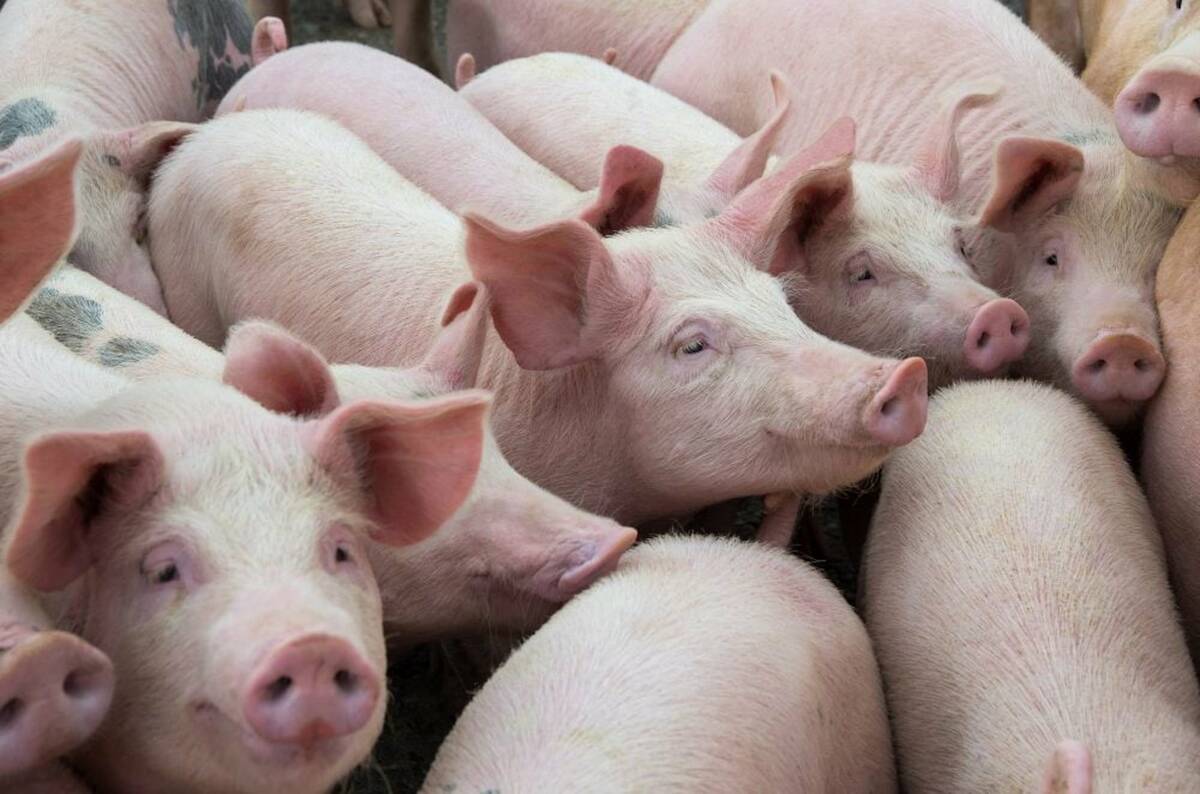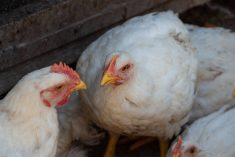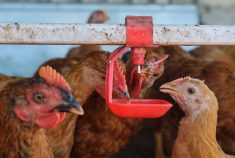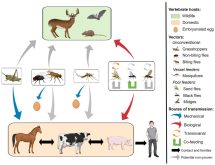Outbreaks of highly pathogenic avian flu have returned to Quebec’s poultry sector after a lull of just over two months, while more Canadian cases continue to pile up at points west.
Canada’s fall migratory season for wild birds appears to have led to the return of outbreaks in both commercial and backyard poultry flocks and “non-poultry” domestic birds in the six provinces that had been reporting waves of infections since this spring.
As of Wednesday, the total number of domestic (commercial and backyard poultry and non-poultry) Canadian birds affected by the avian flu outbreaks in Canada since the disease’s return to Canada last Dec. 20 is estimated at 3.1194 million.
Read Also

U.S. livestock: Cattle rise, hogs recoup losses
Chicago live and feeder cattle futures rose on Tuesday while hog contracts regained Monday’s losses. Most-active February live cattle futures…
Those counts include 1.319 million birds in Alberta, followed by 612,000 in Ontario, 385,800 in Quebec, 339,000 in Saskatchewan, and 255,600 in British Columbia. As of Wednesday, 98 premises across six provinces are under federal quarantine, while another 104 have been released.
Since the last avian flu update on this site, the Canadian Food Inspection Agency has reported new outbreaks of high-path avian flu among five flocks of domestic birds in Quebec, marking the first such confirmations in that province since Aug. 1.
The Quebec cases include three commercial poultry operations: one confirmed Oct. 7 in the municipality (RCM) of Les Jardins-de-Napierville in the Monteregie south of Montreal and two confirmed Tuesday in the RCM of La Haute-Yamaska, between Montreal and Sherbrooke.
They also include an outbreak in a backyard (non-commercial) poultry flock in the RCM of Roussillon, just across the St. Lawrence from Montreal, confirmed Saturday — and one in a backyard “non-poultry” flock in the RCM of Drummond, between Trois-Rivieres and Sherbrooke, confirmed Sunday.
Quebec’s agriculture ministry last Friday reminded owners of domestic farmed birds to try to prevent direct or indirect contact between their birds and wild birds, such as using netting to prevent migratory birds from landing in outdoor farm enclosures, or preventing wild birds from accessing domestic birds’ food and water.
The province also recommended avoiding gatherings of domestic birds, and not allowing direct links between backyard flocks and larger commercial operations.
Elsewhere in Canada since this site’s last report, outbreaks have been confirmed by CFIA in:
- Manitoba: four commercial poultry flocks in the R.M. of Ste. Anne (Oct. 1 and 5 and two on Oct. 6) and one commercial poultry flock each in the R.M. of De Salaberry (Oct. 6) and Bifrost-Riverton (Oct. 7);
- Ontario: a commercial poultry flock at West Lincoln (Oct. 6) and one at Wellesley (Oct. 18), plus two backyard “non-poultry” flocks in the Township of Alfred and Plantagenet (Oct. 8 and 10) and one at East Hawkesbury (Oct. 10);
- Saskatchewan: a commercial poultry flock in the R.M. of Lumsden (Oct. 5) and one in the R.M. of Monet (Oct. 7), plus a backyard “non-poultry” flock in the R.M. of Hazel Dell (Oct 14);
- British Columbia: a commercial poultry flock at Langley (Oct. 15), one each in backyard poultry flocks in the Capital regional district (Oct. 6), Cowichan Valley regional district (Oct. 7) and Saanich (Oct. 10) and one backyard “non-poultry” flock at Langley (Oct. 12); and
- Alberta: a backyard poultry flock in Sturgeon County (Oct. 3) and one backyard “non-poultry” flock in each of Wetaskiwin County (Oct. 13), Lacombe County (Oct. 14), and Rocky View County (Oct. 18).
Saskatchewan on Wednesday also announced it will extend its animal health control area order, which bans movement to and participation of birds in shows, auctions and/or ag fairs, as well as “any other events where birds would be brought together from multiple locations.”
The primary source of high-path avian flu’s spread is linked to wild birds, the province said, so risk is expected to remain high throughout the rest of the fall migration season, which typically runs to mid-November.
Saskatchewan’s animal health order, which had been set to expire Friday (Oct. 21), is now extended to Nov. 17 at the earliest. — Glacier FarmMedia Network
















